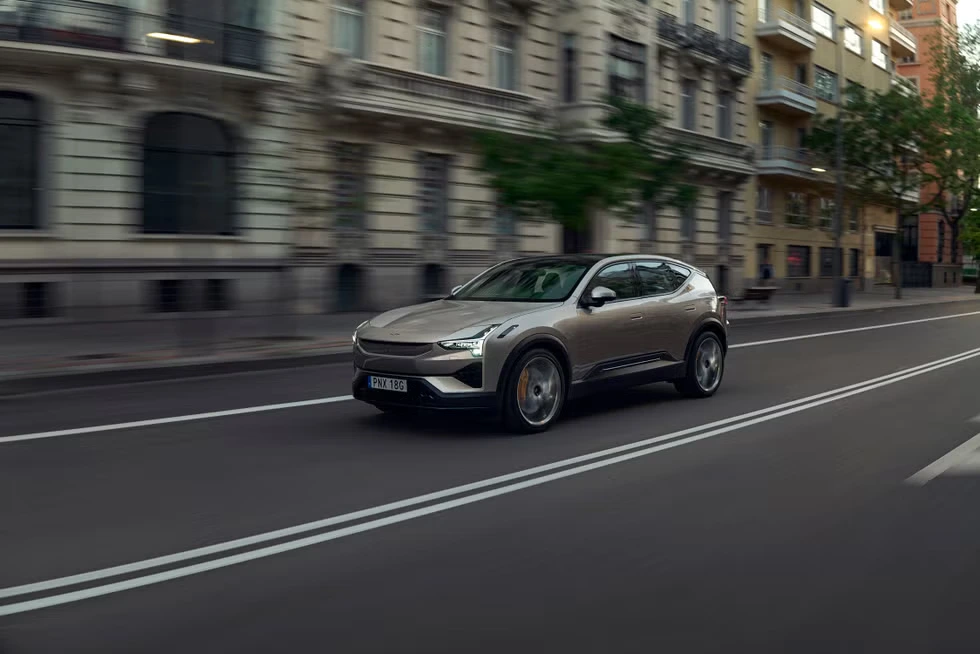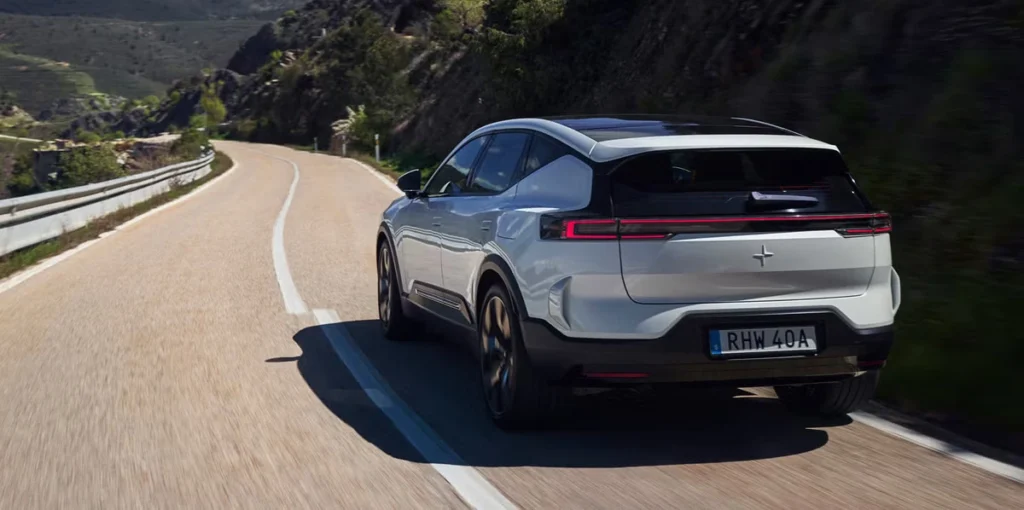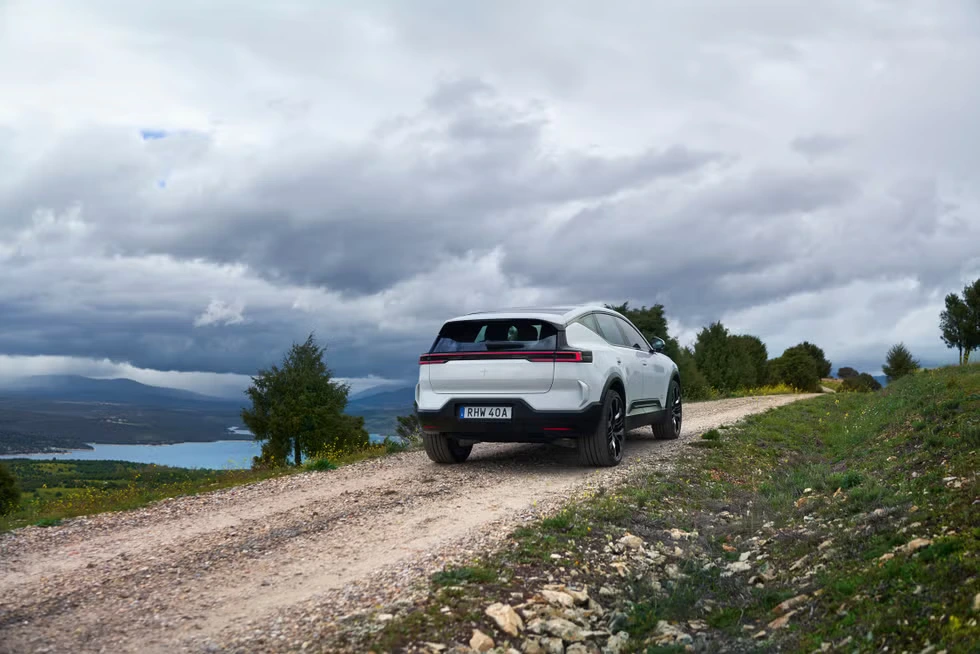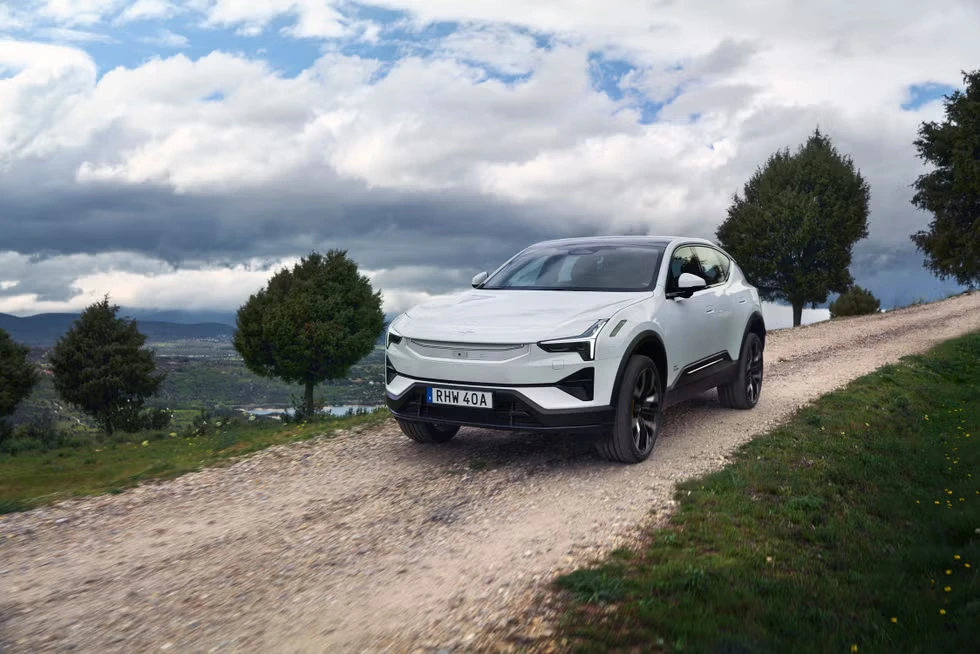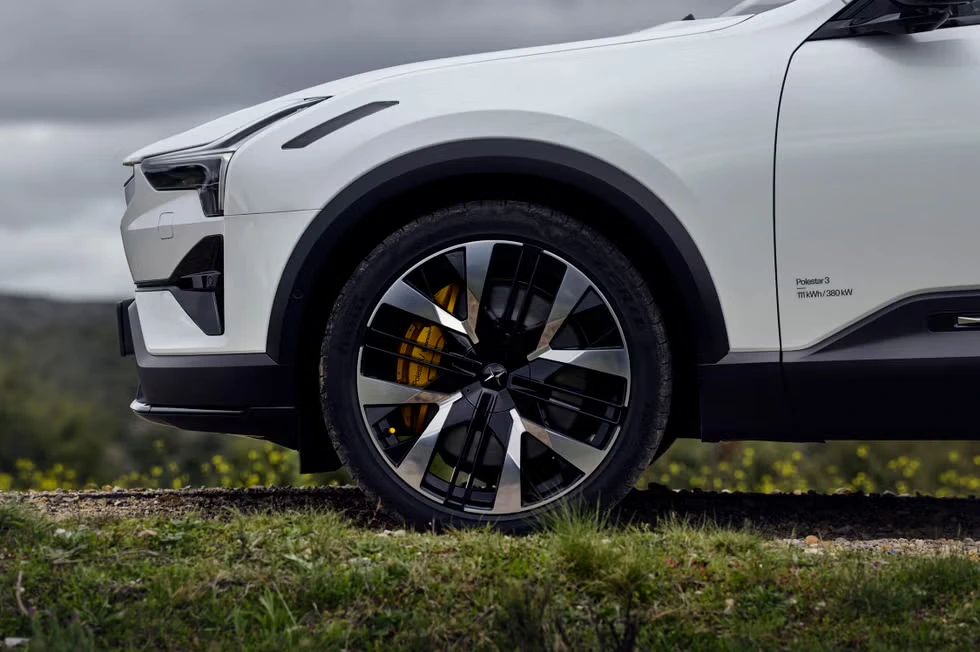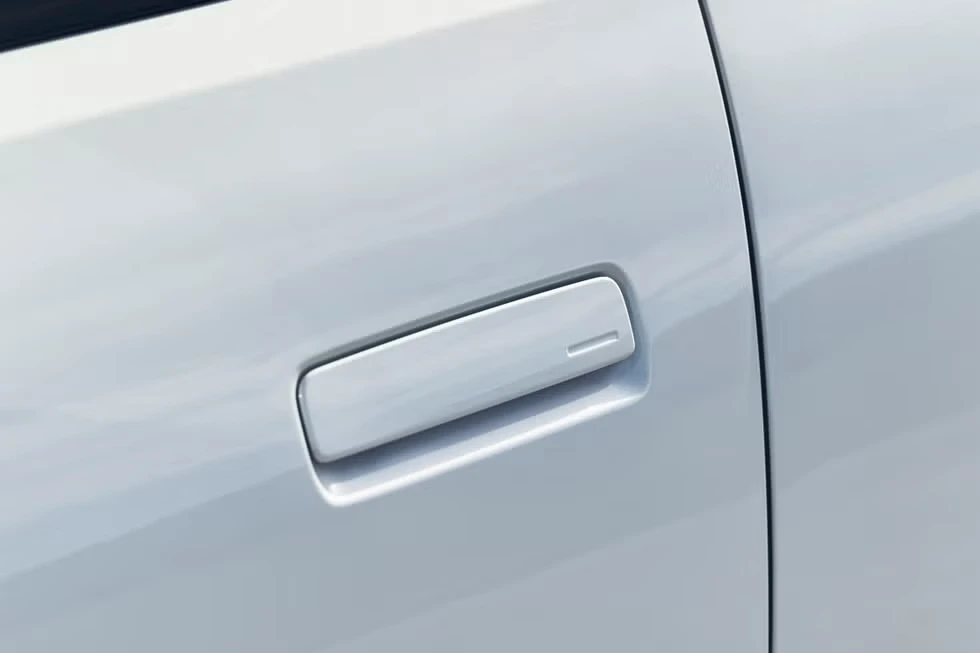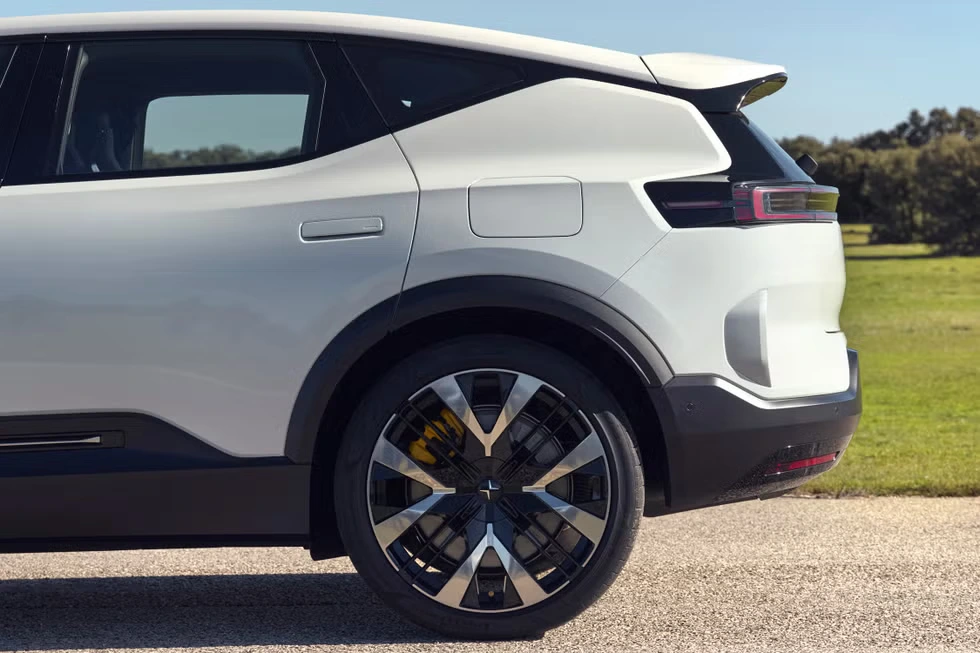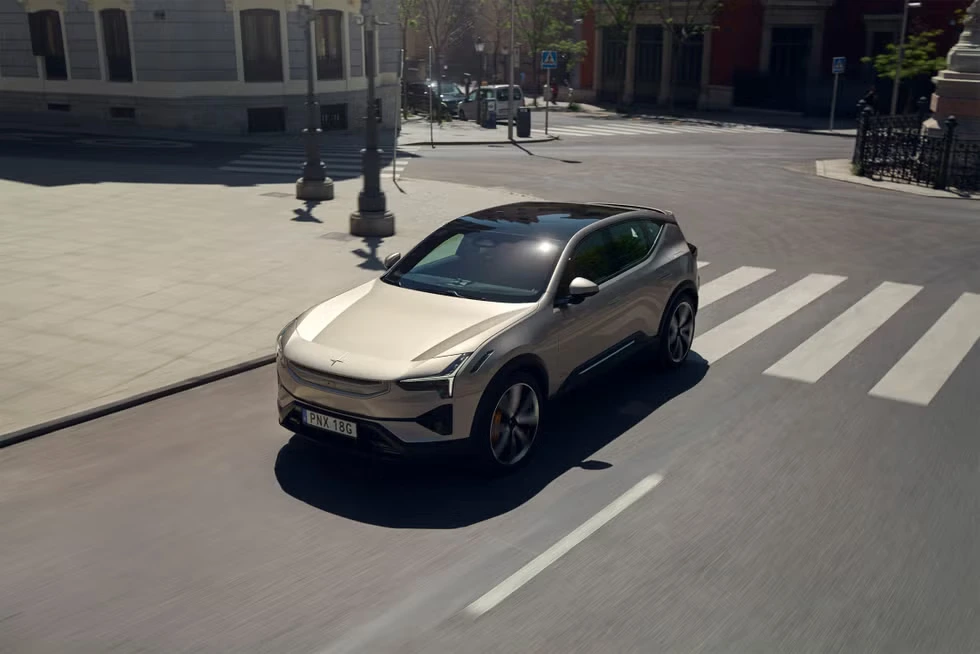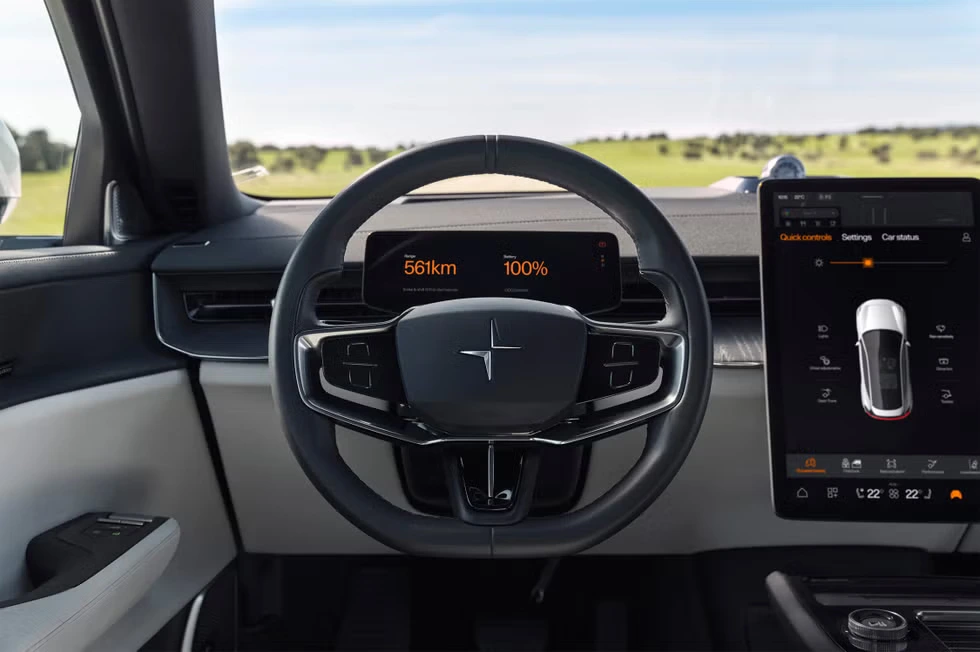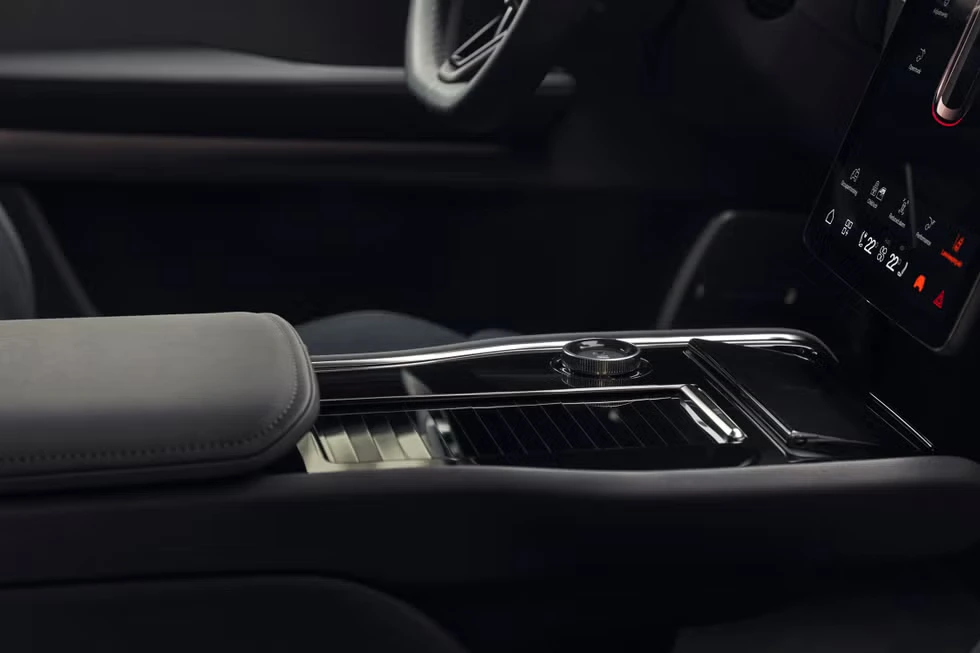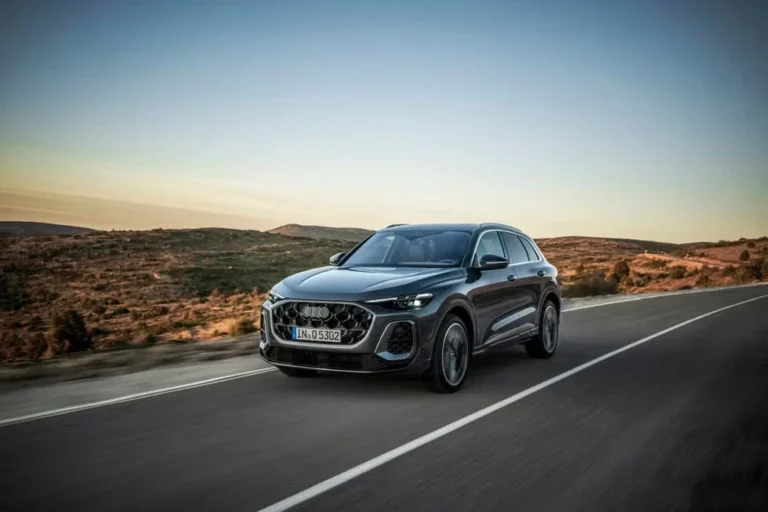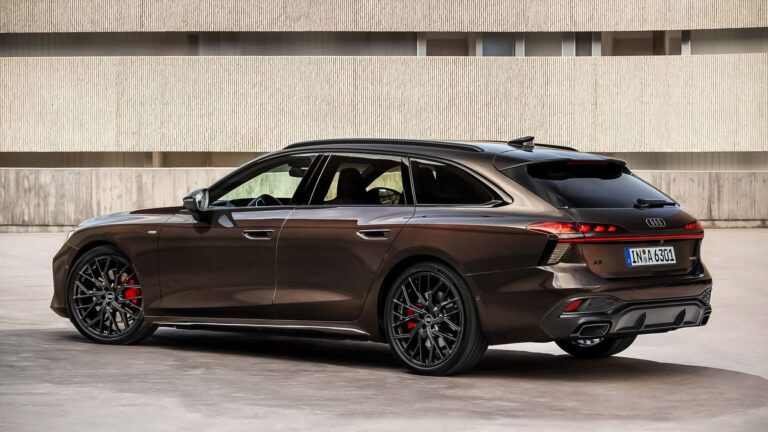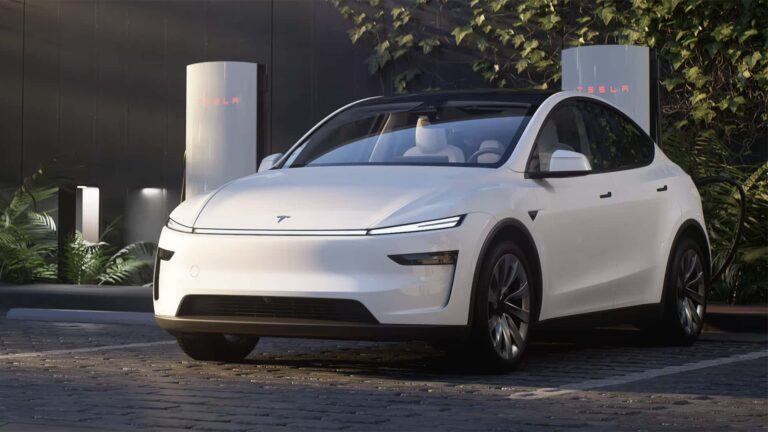After four years of waiting for the Polestar 2 successor finally the 2025 Polestar 3 is here. This is the most expensive Polestar you can buy at the moment. It is the range-topping version, with all the options on it. This new Polestar SUV rivals the likes of the BMW iX, the Audi Q8 e-Tron, and the Mercedes EQE SUV. But is it good enough to ensure it’s competitive?
Polestar has equipped it with loads of tech and a really cool-looking interior. They’ve also made it quite spacious, so there’s plenty of room for your family. You can get it with the kind of kit you’d expect in a high-end luxury electric SUV, such as an electrically deployable tow hitch. So, this is everything you need to know about this electric SUV.
Exterior
On the body, The Polestar 3 is a smart-looking design. It’s a large SUV, but it’s actually got quite a sporty look with a sloping roofline. Wheel sizes start at 20 inches all the way to 22 inches. For the top range models, you get brake callipers in gold colour, along with gold tyre dust caps. Also coming as standard, you get Brembo brakes. On the doors, you’ve got flush door handles, which are nice and easy to operate.
The front is really distinctive featuring really cool vents which make the car really nice-looking. The back is pretty distinctive as well, with a cool light bar design and slats in the lights. Additionally, There’s also a big spoiler on the top.
Interior
Polestar has loaded up its first SUV model with high-end luxury and convenience features. A panoramic sunroof with an illuminated Polestar emblem is standard on all versions. Along with the standard features list, you’ll find a three-zone automated temperature control system, an onboard air purifier, and power front seats with heating. High-end materials that Polestar claims are sustainable and eco-friendly are used in the interior design, which is simple and contemporary. Soft-close doors and a power-adjustable, heated steering wheel are among the perks that come with the optional Plus package. The Polestar 3’s front trunk, often known as the frunk, is a meagre one cubic foot compartment that’s only used for holding the SUV’s travel charging cords. Cargo capacity is also less than in some other SUVs of a similar size.
Back Seats
In the back seats, there’s one small problem: the seat bases are close to the floor because of the battery pack, which means there’s not much under-thigh support. Fortunately, there’s lots of foot space, and you can stretch your legs, so it’s still comfortable. The backrests are quite reclined, which is nice. There’s plenty of headroom, though the Kia EV9 feels more spacious. When it comes to carrying three people in the back, it’s a bit tight on shoulder room but otherwise pretty good.
Infotainment and Connectivity
The tech in this car is very good. Polestar’s latest Google-based infotainment interface runs on a huge 14.5-inch touchscreen display that comes standard. The Polestar 3’s gauge cluster is built around a secondary 9.0-inch display. You can access different menus easily, though it’s a bit annoying that the climate control is on the screen with no physical buttons. You can use Google Assistant voice commands to change functions. The driver’s display is clear, and I like the touch-sensitive buttons on the steering wheel. You can get the car with a heads-up display, which is nice and clear.
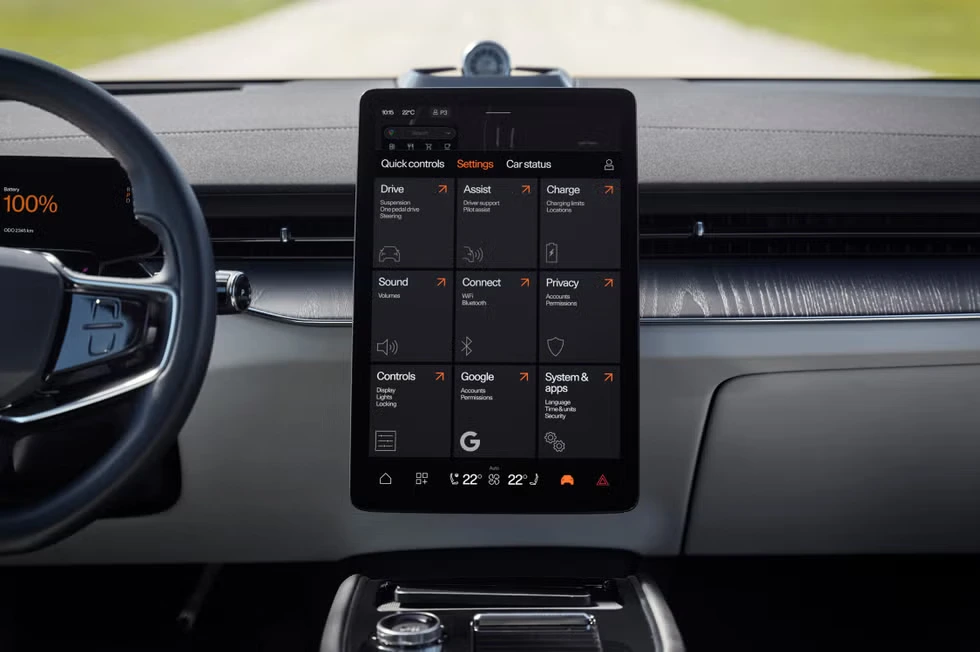
Cargo Capacity
The cargo capacity is 485 litres, a bit less than its rivals, but the loading lip is flat, so it’s easy to slide stuff in and out. There’s a divider to stop things from sliding around, tie-down points, nets, hooks, and a 12-volt socket. The rear seats fold down nicely, and you get a flat load bay. The front cargo area is only 30 litres, so it’s not as spacious as a Tesla Model Y.
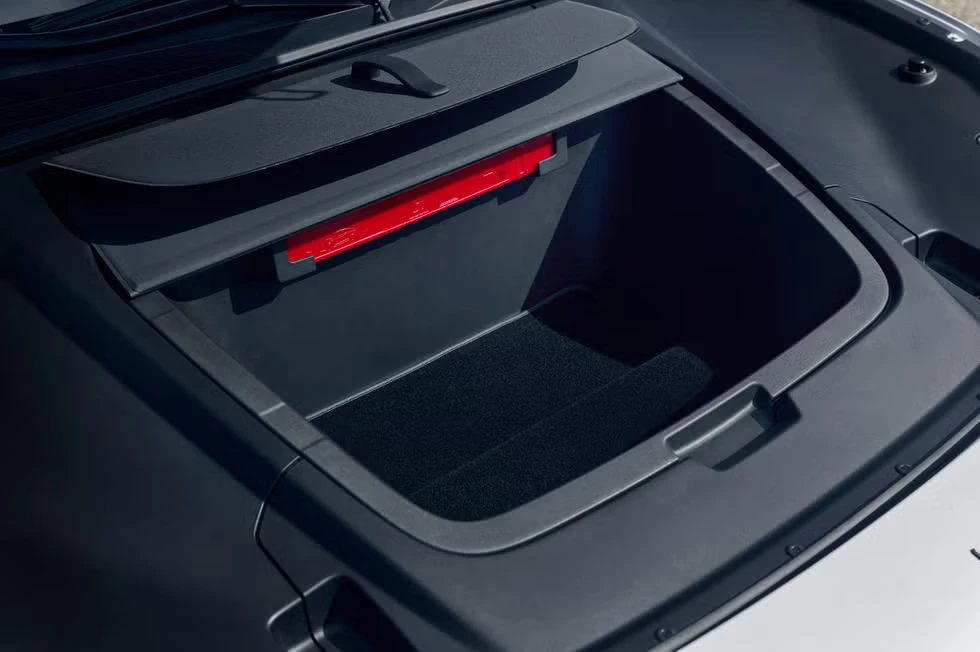
Polestar 3 Cons
- The door release can pinch your finger if you’re not careful.
- There’s no Apple CarPlay yet, though it’s supposedly coming.
- The driver’s switches for the back windows require toggling, which feels a bit cheap.
- The black plastic trim reflects badly and scratches easily.
- Finally, when you put the car into drive, the icons for the steering wheel and mirrors disappear, so you have to dig through menus to adjust them.
Polestar 3 Pros
- First, you can raise and lower the air suspension from a button in the boot.
- The load cover can be stored under the floor and is easy to fit.
- You can get a Bowers & Wilkins stereo with 25 speakers, 1600 watts of power, and Dolby Atmos.
- The panoramic sunroof blocks 99.5% of UV rays, so you don’t need a blind, freeing up more headroom.
- The car has a sensor that can detect animals or children inside and turn on the air conditioning automatically to keep the temperature comfortable.
How does the Polestar 3 feel like driving?
When driving, the Polestar 3 around town is very comfortable. The air suspension deals with bumps beautifully making it feel like an expensive car. Also, you can use one-pedal driving, which brings the car to a complete standstill without needing the brakes. The brakes themselves are a bit sensitive at low speeds but feel more natural when you’re driving faster. The steering is light and responsive, and despite being a big car, it’s easy to manoeuvre thanks to the good driving position and large mirrors. The car’s turning circle is better than its German rivals, making U-turns easy.
On the motorway, the Polestar 3 is impressively quiet. There’s hardly any road noise, just a bit of wind noise, and it feels relaxing to drive. The seats are comfortable, and I like the driving experience. As for efficiency, the car averages 2.6 miles per kilowatt-hour, giving it a real-world range of about 270 miles, slightly less than the manufacturer’s claim but still decent considering it’s been driven hard by journalists.
On country roads, the Polestar 3 handles impressively well for a car that weighs 2.5 tons. The performance version has a torque-vectoring system that helps it go around corners quickly. The steering could offer more feel, but the grip and handling are excellent overall. The car feels confident and poised, even when driving spiritedly.
0-60 mph
Finally, the Polestar 3 does 0-60 mph in 4.55 seconds, which is quick, though not as fast as a Tesla.
Safety and Driver Assistance Features
Regarding safety, Every Polestar 3 model comes equipped with various driver-assistance systems, including adaptive cruise control, lane-keeping assist, pedestrian and cyclist recognition, blind-spot monitoring, automatic high-beam headlights, and a driver-monitoring system. Later on, a LiDAR system will be available, which Polestar claims will enable even more advanced semi-autonomous systems.
Polestar 3 Range
All variants include the same 107.0-kWh battery pack, which can charge up to 250 kW via a fast-charging DC connection. Polestar claims that’s enough to charge the battery from 10 to 80 per cent in as little as 30 minutes. Once fully charged, the Long-Range Dual Motor model is expected to travel up to 315 miles before needing to be re-juiced; the more powerful Performance model’s projected range is significantly lower, at 279 miles per charge.
Polestar 3 Price
The price of the 2025 Polestar 3 varies depending on the trim level and options. The base price starts at around $74,800 and goes up to $86,300. Here’s a breakdown of the pricing:
- Long Range Dual Motor with Pilot Pack: $74,800
- Long Range Dual Motor with Pilot and Plus Packs: $80,300
- Long Range Dual Motor with Pilot and Performance Packs: $80,800
- Long Range Dual Motor with Pilot, Performance, and Performance Packs: $86,300


